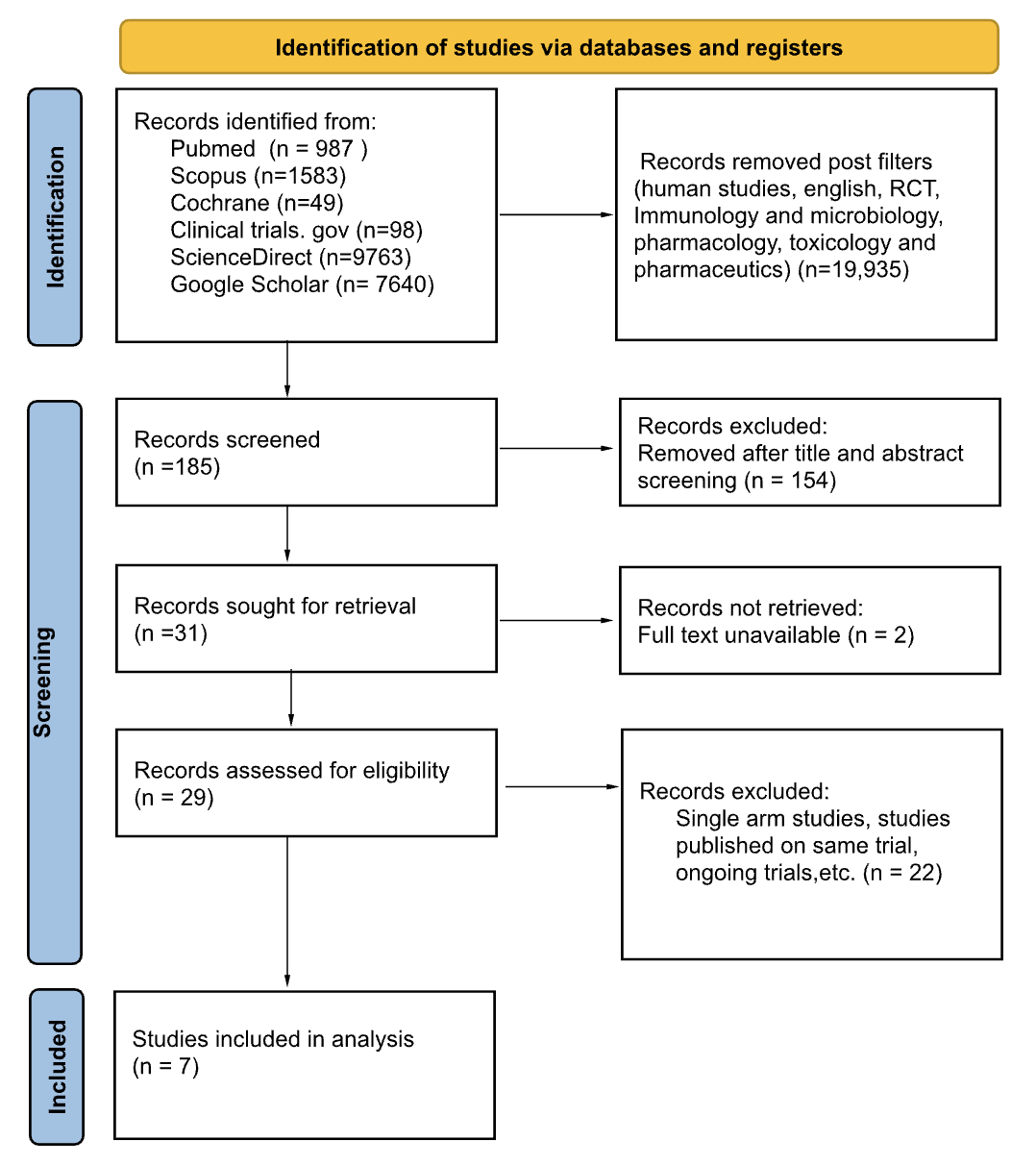Tuesday Poster Session
Category: Liver
P5814 - Comparative Efficacy of Immunosuppressants in Autoimmune Hepatitis: A Network Meta-Analysis
Tuesday, October 28, 2025
10:30 AM - 4:00 PM PDT
Location: Exhibit Hall
- AM
Aparna Malireddi, MBBS (she/her/hers)
Andhra Medical College
Visakhapatnam, Andhra Pradesh, India
Presenting Author(s)
Aparna Malireddi, MBBS1, Suchith Boodegere Suresh, 2, Anastasiia Babintseva, MD2, Sri Sai Kaumudi Chirumamilla, MBBS3
1Andhra Medical College, Visakhapatnam, Andhra Pradesh, India; 2Montefiore St Luke's Cornwall Hospital, Newburgh, NY; 3Mayo clinic, Rochester, MN
Introduction: Autoimmune hepatitis (AIH), a rare chronic liver disease affecting 15.65/100,000 globally, causes progressive liver inflammation often leading to cirrhosis. Without treatment, 5-year mortality can reach up to 50%. However, life expectancy is 90% in 10 years with treatment, emphasizing the importance of timely and effective therapy. This network meta-analysis compares induction and maintenance regimens for remission and relapse prevention.
Methods: We systematically searched PubMed, Scopus, Cochrane, ScienceDirect, Google Scholar and ClinicalTrials.gov through April 2025, including 6 RCTs and 1 retrospective study. PRISMA-guided pairwise network meta-analysis evaluated biochemical/histological remission (induction phase) and relapse-free survival (maintenance phase) using a net meta package on R.
Results: A total of 718 patients with a mean age 42.12 ±14.25 years (23.7% males) were analyzed. Chloroquine +Prednisolone showed highest biochemical remission likelihood (P-score=0.97; RR=2.98, 95% CI:1.06–8.40), followed by Mycophenolate +Prednisolone (P-score= 0.50; RR=1.12, 95% CI:1.00–1.25; I²=45.8%) and Azathioprine + Prednisolone (P-score=0.02 ). Among monotherapies, Budesonide had the highest remission probability (P-score = 0.82; RR = 1.10, 95% CI: 0.98–1.24, p = 0.09), followed by Cyclosporin A (P-score= 0.37; RR = 0.93, 95% CI: 0.47–1.83, p = 0.84) and Prednisolone (P-score= 0.31). Azathioprine+Prednisolone ranked best for histological remission (P-score=0.72), followed by Mycophenolate mofetil + Prednisolone (P-score= 0.43 ; RR= 0.87 , 95% CI: 0.56-1.35, p = 0.55) and Chloroquine + Prednisolone (P-score= 0.36; RR= 0.80, 95% CI: 0.36-1.76, p= 0.58). Chloroquine monotherapy (P-score= 0.96; RR=2.90, 95% CI:1.05–8.00, p= 0.04) outperformed Ursodeoxycholic acid (P-score= 0.33; RR=1.09, 95% CI: 0.53–2.22, p= 0.82) in maintenance.
Discussion: Chloroquine+Prednisolone emerges as optimal for biochemical remission and relapse prevention, while Azathioprine+Prednisolone excels histologically. Overall, Chloroquine demonstrates a notable efficacy in both the induction and maintenance phases of the treatment. However, the scarcity of comparative data reveals a significant knowledge gap. Large-scale RCTs directly comparing regimens and biomarker studies to guide treatment monitoring are needed to optimize AIH management.

Figure: PRISMA Flowchart.

Figure: Network geometry, Network meta-analysis and Rank plot.
Disclosures:
Aparna Malireddi indicated no relevant financial relationships.
Suchith Boodegere Suresh indicated no relevant financial relationships.
Anastasiia Babintseva indicated no relevant financial relationships.
Sri Sai Kaumudi Chirumamilla indicated no relevant financial relationships.
Aparna Malireddi, MBBS1, Suchith Boodegere Suresh, 2, Anastasiia Babintseva, MD2, Sri Sai Kaumudi Chirumamilla, MBBS3. P5814 - Comparative Efficacy of Immunosuppressants in Autoimmune Hepatitis: A Network Meta-Analysis, ACG 2025 Annual Scientific Meeting Abstracts. Phoenix, AZ: American College of Gastroenterology.
1Andhra Medical College, Visakhapatnam, Andhra Pradesh, India; 2Montefiore St Luke's Cornwall Hospital, Newburgh, NY; 3Mayo clinic, Rochester, MN
Introduction: Autoimmune hepatitis (AIH), a rare chronic liver disease affecting 15.65/100,000 globally, causes progressive liver inflammation often leading to cirrhosis. Without treatment, 5-year mortality can reach up to 50%. However, life expectancy is 90% in 10 years with treatment, emphasizing the importance of timely and effective therapy. This network meta-analysis compares induction and maintenance regimens for remission and relapse prevention.
Methods: We systematically searched PubMed, Scopus, Cochrane, ScienceDirect, Google Scholar and ClinicalTrials.gov through April 2025, including 6 RCTs and 1 retrospective study. PRISMA-guided pairwise network meta-analysis evaluated biochemical/histological remission (induction phase) and relapse-free survival (maintenance phase) using a net meta package on R.
Results: A total of 718 patients with a mean age 42.12 ±14.25 years (23.7% males) were analyzed. Chloroquine +Prednisolone showed highest biochemical remission likelihood (P-score=0.97; RR=2.98, 95% CI:1.06–8.40), followed by Mycophenolate +Prednisolone (P-score= 0.50; RR=1.12, 95% CI:1.00–1.25; I²=45.8%) and Azathioprine + Prednisolone (P-score=0.02 ). Among monotherapies, Budesonide had the highest remission probability (P-score = 0.82; RR = 1.10, 95% CI: 0.98–1.24, p = 0.09), followed by Cyclosporin A (P-score= 0.37; RR = 0.93, 95% CI: 0.47–1.83, p = 0.84) and Prednisolone (P-score= 0.31). Azathioprine+Prednisolone ranked best for histological remission (P-score=0.72), followed by Mycophenolate mofetil + Prednisolone (P-score= 0.43 ; RR= 0.87 , 95% CI: 0.56-1.35, p = 0.55) and Chloroquine + Prednisolone (P-score= 0.36; RR= 0.80, 95% CI: 0.36-1.76, p= 0.58). Chloroquine monotherapy (P-score= 0.96; RR=2.90, 95% CI:1.05–8.00, p= 0.04) outperformed Ursodeoxycholic acid (P-score= 0.33; RR=1.09, 95% CI: 0.53–2.22, p= 0.82) in maintenance.
Discussion: Chloroquine+Prednisolone emerges as optimal for biochemical remission and relapse prevention, while Azathioprine+Prednisolone excels histologically. Overall, Chloroquine demonstrates a notable efficacy in both the induction and maintenance phases of the treatment. However, the scarcity of comparative data reveals a significant knowledge gap. Large-scale RCTs directly comparing regimens and biomarker studies to guide treatment monitoring are needed to optimize AIH management.

Figure: PRISMA Flowchart.

Figure: Network geometry, Network meta-analysis and Rank plot.
Disclosures:
Aparna Malireddi indicated no relevant financial relationships.
Suchith Boodegere Suresh indicated no relevant financial relationships.
Anastasiia Babintseva indicated no relevant financial relationships.
Sri Sai Kaumudi Chirumamilla indicated no relevant financial relationships.
Aparna Malireddi, MBBS1, Suchith Boodegere Suresh, 2, Anastasiia Babintseva, MD2, Sri Sai Kaumudi Chirumamilla, MBBS3. P5814 - Comparative Efficacy of Immunosuppressants in Autoimmune Hepatitis: A Network Meta-Analysis, ACG 2025 Annual Scientific Meeting Abstracts. Phoenix, AZ: American College of Gastroenterology.
